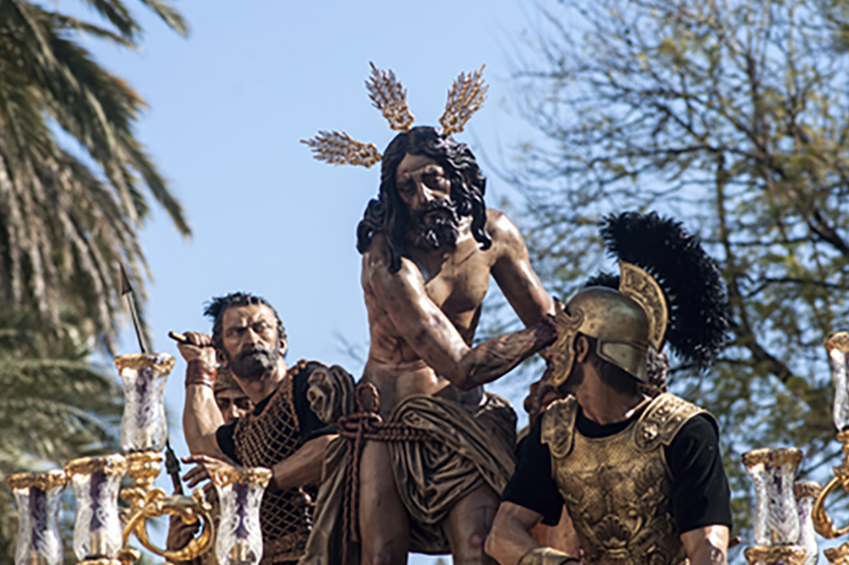
Being a predominantly Christian country, Lent is an important religious event observed annually in the Philippines. It is a 40-day season that starts on Ash Wednesday and ends with Holy Week. During this period, Christians reflect on their sins and commemorate the life, passion, death and resurrection of Jesus Christ.
Holy Week begins with Palm Sunday and ends with the celebration of Easter Sunday. It is a period of utmost solemnity; in olden times businesses would close for all or part of the Easter Triduum (Maundy Thursday until Black Saturday), and parents would warn their kids not to be rowdy or noisy. However, times have significantly changed and one cannot help feeling that the significance of the Lenten season has been somewhat lost on many as it increasingly becomes a routine for some and perhaps just a loud spectacle to watch for others.
So what makes Holy Week uniquely Filipino?
Pabasa
Literally translated as reading, but in the context of Holy Week it takes on the form of chanting.
Filipinos, especially older folks like our grandparents, read the book of the passion of the Christ with a very distinct melody. This public display of reverence to the cross usually takes all day and all night, and everyone is welcome to join. Drinking salabat (ginger tea) is very popular for during a “Pabasa” as it helps to avoid throat swelling due to continuous chanting and singing.
Palaspas
Palaspas (palm branches) are waved during Palm Sunday mass to mark the start of Holy Week. This is a commemoration of Christ arrival and entry into Jerusalem, days before he would be crucified; crowds of people had gathered to welcome him and waved palm branches in the air as they shouted ‘Hosanna’ which is Hebrew for ‘God saves’.
After the holy week, Filipinos usually keep the “palaspas” in their homes because this signifies suwerte (good luck). The palm leaves are replaced the following year.
Senakulo
Filipinos perform the senakulo, a play dramatizing the life, sufferings and death of Jesus Christ. It is taken from the Spanish word ‘cenakulo’ which literally means the upper room. In Christian tradition, the upper room is significant as it was the place where the Last Supper was held and it is the usual site where the Apostles stayed when they were in Jerusalem. In some parts of the Philippines, senakulos are held from Palm Sunday to Black Saturday.
Visita Iglesia
Visita Iglesia refers to church visitation done during Holy Week. Traditionally, Visita Iglesia was done after the Last Supper mass celebrated on Maundy Thursday evening. Nowadays it is common for people to do Visita Iglesia on any day during Holy Week.
What started out as a way to honor the Blessed Sacrament eventually turned into a form of pilgrimage as Christians visit 14 churches for each station of the Cross, or 7 churches for every two stations of the Cross, whichever is manageable.
For some it is a form of penance for sins while for others it is a way to seek God’s favor to grant a wish. For others still, it may be an opportunity to do some sightseeing while spending time with family and friends.
Seven Last Words
The Seven Last Words recounts the last words of Jesus before he died on the cross. The commemoration usually starts at noon and lasts until 3 pm which is the time Christians believe Christ died on the cross.
Prusisyon
During Holy Week, it is common for devotees to participate in religious processions where life size statues of religious characters are paraded on carrozas (floats). Such processions would usually start and end at the church, and going around the vicinity where crowds of devotees would be waiting by the roadside or walking behind the various carrozas. Three characters that would always be present in such processions are the Tres Marias – Maria Magdalene, Maria Cleofe, and Maria Jacobe.
Penitensiya
This Filipino version of repentance is not for the faint of heart – the sight of bloodied bodies walking the streets, carrying a cross and lashing their own backs with whips made of broken glass, nails or other sharp objects is not only controversial but is also a much-anticipated part of Holy Week. Those who choose to go through penitensiya may do it to atone for their sins or as thanksgiving for prayers granted.
Salubong
Easter Sunday celebration begins at 4 am in most churches where a vigil is held to commemorate the Risen Christ meeting Mary. This is when Christians believe that Christ is alive again after having been dead since 3 pm on Good Friday.
These days, Easter Sunday is most commonly associated with an easter egg hunt. In previous times, an egg was commonly used as a symbol of rebirth, and in Christian context is associated with the resurrection of Jesus Christ.
This Lenten season, no matter which part of the world you are in, taking part in these uniquely Filipino traditions and celebrations can make you feel closer to your roots and help strengthen your faith in God.
